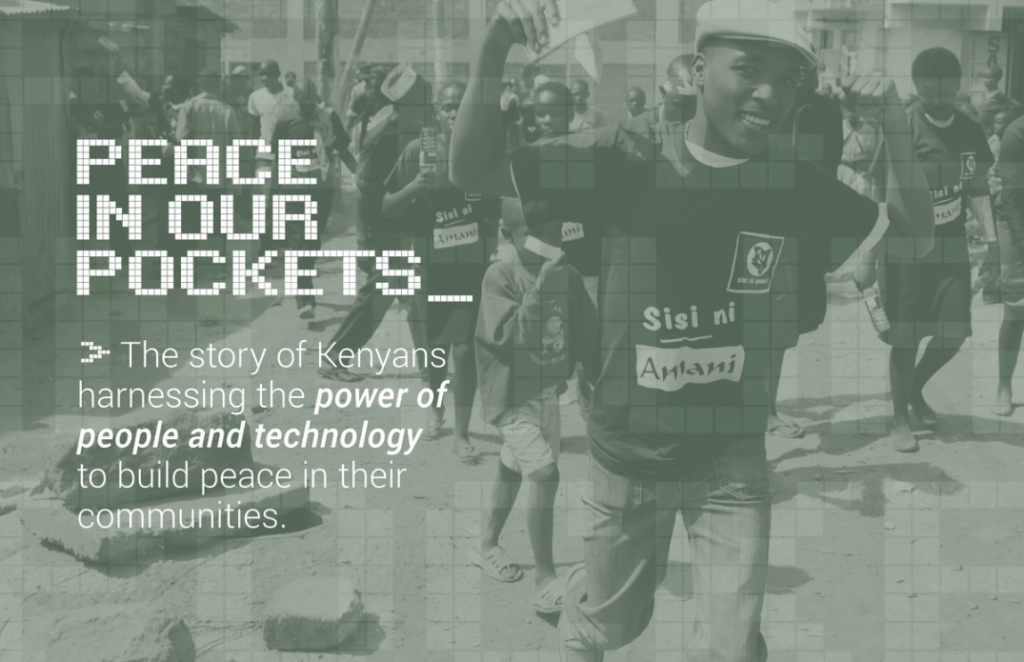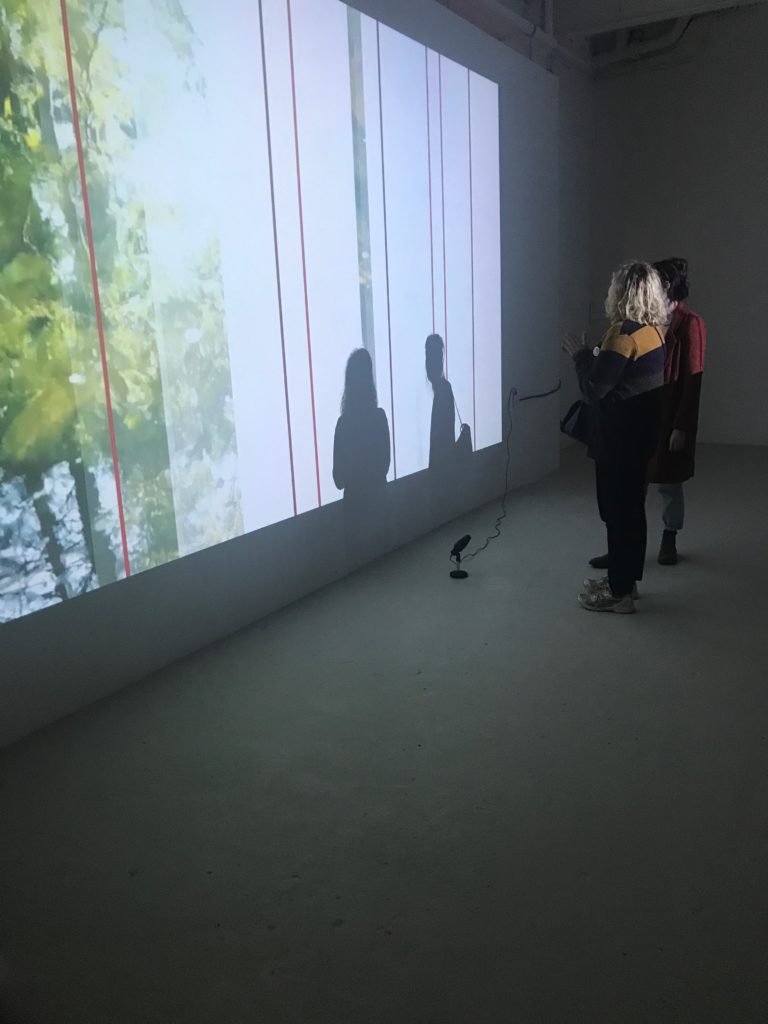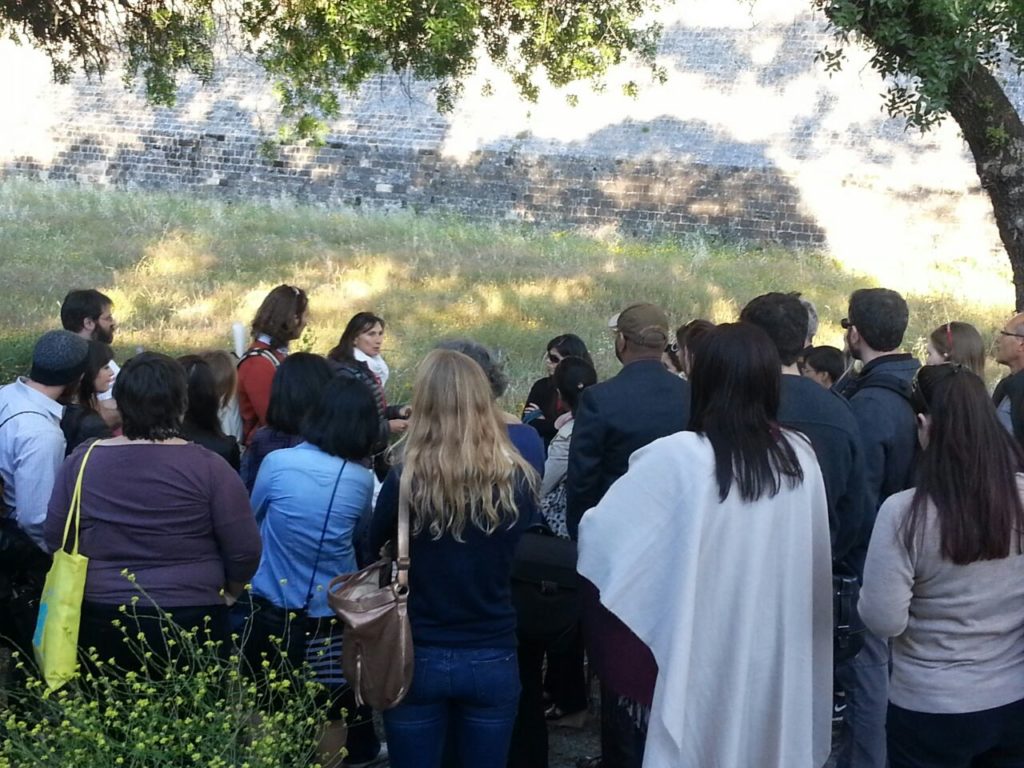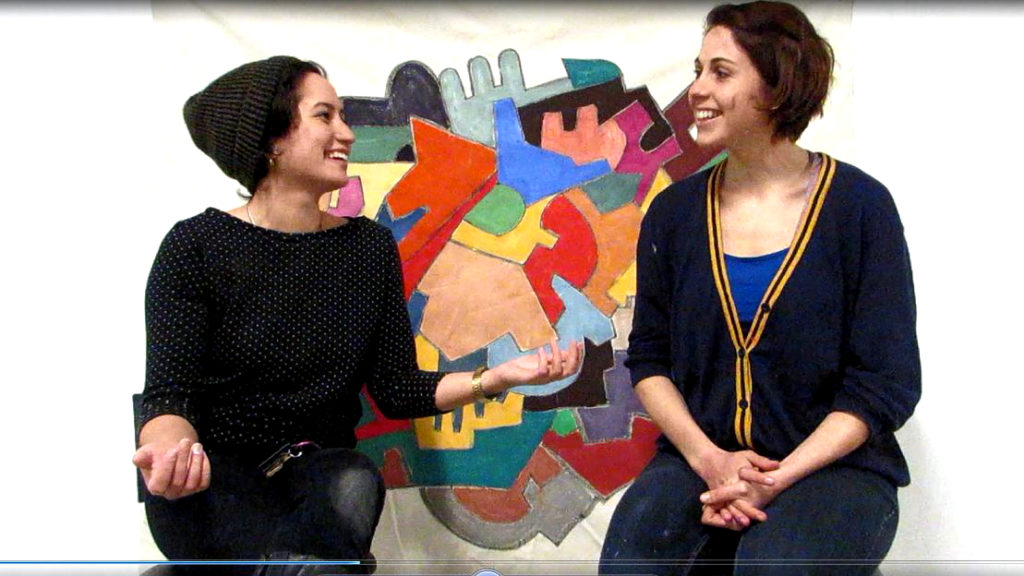Build Peace 2015
The second Build Peace conference took place in Nicosia, Cyprus on April 25 & 26, 2015. The conference theme was “Peace through technology – by whom, for whom?” and was organized around three key topics: behavior change, impact, and empowerment.
Build Peace 2015 took place in Nicosia (Cyprus), the last divided capital in Europe. 250 participants from 60 different countries convened in venues across the city, in both the Turkish Cypriot and the Greek Cypriot communities. Participants came from national and international NGOs, the UN system, academic institutions, civil society organisations, grassroots organizing and the private sector. This year for the first time we also invited a number of artists to explore the intersection of technology, art and peace.
The conference was organized around one key inquiry: how is the use of technology resulting in the creation of alternative infrastructures for peace? From this flowed three sub-themes: empowerment (who is empowered, by whom and how?), behavior change (and empowered to do what?), and impact (what are the actual or possible impacts of using technologies for peacebuilding?).
Reflections written by conference participants are in our blog archive.
All conference presentations can be watched on our YouTube channel, and some materials are also available in this public drive.
The conference mixtape can be accessed here.
Keynote Speakers
Dalia Haj-Omar
Dalia Haj-Omar is a Sudanese human rights activist. Her work focuses on supporting Sudanese civil society on international advocacy, communications, and the strategic use of new media for campaigning. She co-authored the Sudan Chapter to Freedom House’s Freedom on the Net publication (2013 & 2014). Dalia told the story of how her work with youth naturally brought her to digital activism and campaigning. Through her experience with Sudanese civil society, she commented on the interaction between technology and local infrastructures for peace.
Sheldon Himelfarb
Sheldon Himelfarb is President of the newly-created PeaceTech Lab. The Lab was launched by the US Institute of Peace in Washington, DC to work at the intersection of technology, media, and data to help reduce violent conflict around the world. Sheldon talked about how the global ubiquity of low‐cost, easy‐to‐access technology is changing the way information and capital flow. This emergent reality has unleashed a new breed of social entrepreneur and has expanded corporate presence in conflict zones, creating market‐based peacebuilding opportunities.
Patrick Meier
Patrick Meier (PhD) is a test pilot for next generation humanitarian technologies. He presently serves as Director of Social Innovation at QCRI where he develops and prototypes Next Generation Humanitarian Technologies with multiple humanitarian organizations. He is the author of the forthcoming book “Digital Humanitarians: How Big Data is Changing the Face of Humanitarian Response” (2015) and blogs at iRevolution.net. Patrick shared lessons learned over the past few years of UAVs (drones) deployed for humanitarian missions.
Socrates Stratis & Esra Can Akbil
Socrates Stratis (PhD. Architect and Urbanist) is a tenure track professor at the Department of Architecture, University of Cyprus. Esra Can Akbil (Architect, Urbanist, Designer) is a founding member of Etika Studio and Archis Interventions_Cy. Socrates and Esra are part of the Imaginary Famagusta group, working on the Hands-on Famagusta project. Socrates and Esra explained how Hands-on Famagusta is creating an interactive platform for Cypriots to reach common visions of a unified post-conflict Famagusta.
Panels
Changing Behaviours through Technology
While PeaceTech has now demonstrated the ability to elicit positive social behaviors at scales and speed previously unimagined, the potential for misuse, and particularly for disastrous unintended consequences, is very real.
Chair: Mark Nelson, Stanford Peace Innovation Lab
Panelists: Mukhtar Hersi Mohamed, Puntland Development Research Center; Valerie Oliphant, SIMLab; Ronny Edry, Peace Factory;
Power Dynamics of Technology for Peacebuilding
Relationship between power and peace has always been a key marker violence. The capacity to overcome or exacerbate violent conflict depends largely on how power is used, by whom and for whom – echoing the theme of the conference.
Chair: Sanjana Hattotuwa, ICT4Peace Foundation
Panelists: Oren Murphy, USAID Office of Transition Initiatives; Philip Thomas, D3 Associates; Sabrine Saad, Saint Joseph University
Introducing Tech to Traditional Peacebuilding Programs
Issues about the relevance, value, and efficacy of technology in traditional peacebuilding initiatives. While technology has an unrivalled power to broaden the spaces and opportunities for such exchanges, it can also be perceived as an alien mechanism.
Chair: Cindy Chungong, Search for Common Ground
Panelists: Dr Ioannis Tellidis, Kyung Hee University; Aaron Shneyer, Heartbeat
Working Sessions
There were 6 working sessions at Build Peace 2015 where participants got hands-on in relevant action areas:
Evaluation Methods
Facilitator: Matthew Levinger (George Washington University)
View working session presentation
Read the blogpost
Peace Data Analysis
Facilitators: Patrick Vinck (Harvard Humanitarian Initiative), Phuong Pham (Harvard Humanitarian Initiative), Alexandros Lordos (SeeD), Ulrich Mans (Leiden University), Natalie Shoup (Data Pop Alliance)
Games for Peacebuilding, A Hands On Experience
Facilitator: Derek Gildea (PeaceTech Lab)
Download the session notes
View working session presentation.
Foresight and Peace
Facilitator: Tessa Finlev (Institute for the Future)
Media and Polarization
Facilitator: Jonathan Stray (Columbia University)
View working session presentation
Collaborative Project Clinic for Tech-enabled Initiatives
Facilitators: Maud Roure (Interpeace), Jim Williams (Raabta Consultants)
Short Talks
Mapping the third space: Mappingkarpas knowledge tool
Giorgos Psaltis, Architect, Archis Interventions_Cy
Copcast – Using mobile technology to improve police accountability
Bruno Siqueira, System Engineer, Igarape Institute
Engaging communities for security mapping with mobile devices
Ayan Kishore, Senior Associate, Technology for Development, Creative Associates International
Border Lives: Using New Technology to reach New Audiences
Conor Mc Gale, Project Manager, Tyrone Donegal Partnership
Games for Peace – Building Dialogue in conflict zones through online games
Uri Mishol, Chairman, Games for Peace
Empathy Machines – Using Virtual Reality Simulations to Enhance Intergroup Relations
Béatrice Hasler, Post-Doctoral Researcher, University of Barcelona
Engaging youth from Stockholm’s marginalized suburbs through participatory video
Christelle Mestre, Programme Officer, Interpeace
Jessie Mooberry, Vice Director, The Syria Airlift Project
Managing Rumours and Preventing Violence in Kenya’s Tana Delta
Christopher Tuckwood, Executive Director, The Sentinel Project
Peace-building through Storytelling & Alternative Media
Aya Chebbi, The Voice of Women Initiative
Peacemaking in School Contexts Using Interactive Tabletops
Chrystalla Antoniou, PhD Candidate, Cyprus University of Technology
The Social Cohesion and Reconciliation Index
Maria Ioannou, Researcher, SeeD
Lessons from the Grassroots: melding art and low tech to deeply engage at-risk communities in Kenya
Sasha Kinney, Researcher, Mtaani Initiative
Changing how we see the world: Changing the world with software, neuroscience, and Do No Harm
Marshall Wallace, Founder and CEO, Brevity
Where Technology Meets Trust: The social context of technology, information and peacebuilding
Charles Martin-Shields, Research Fellow, Institute for Economics and Peace
Factr: Engaging human networks for conflict early warning
Chris van der Walt, CEO, Factr
Arts Program: Together Separate, Contesting Space
Together Separate was an artistic showcase of individual and collective work that engages with the global issue of contested boundaries, borders, and spaces — a theme directly reflected in the host city of Nicosia. We asked, “What does it mean to create, claim, hold, and/or use a space?” To answer this question, we invited works that address human experiences of shared and contested space, including but not limited to public and private spaces, digital space, permanent and temporary spaces, natural and artificial spaces, political and economic spaces, secure space, unsecured space, crossing through space, transcending space, occupying space, and lack of space.
Kenny Dalsheimer – Peace in Our Pockets
Kenny Dalsheimer is a documentary filmmaker based in Durham, North Carolina. His new film Peace in Our Pockets presents an inspiring Kenyan case-study in peacebuilding with timely lessons about how technology and people-to-people organizing can transform social spaces. The film was produced to be used as a catalyst for dialogue and action and a resource for for peacebuilders, policy makers, conference organizers, and educators around the world. You can watch a trailer here.

Ali Eyal – Tourist Trips in Baghdad
Ali Eyal is a visual multimedia artist from Baghdad, Iraq. Tourist Trips in Baghdad documents the illusion of tourism in Baghdad through a tourist’s photo album. The imagined visit portrayed in the photo album took place on October 25, 2013, where the guests took 35 pictures that filled their hearts with happiness as they explored different parts of Iraq.

Maximón Monihan and Sheena Matheiken – La Voz De Los Silenciados
Maximón Monihan and Sheena Matheiken are director and producer, respectively, of La Voz de los Silenciados (The Voice of the Voiceless). La Voz is a poetic feature film that thoughtfully draws attention to the issue of modern day slavery that persists throughout the globe. This magical-neo-realist modern day silent film takes us inside the mind and heartbreak of Olga, a deaf teenager brought from Latin America to New York City under the false pretenses of attending a “Christian Sign Language School.”

Talia Lefton – Meeting Point
Talia Lefton is a fiber artist who creates large and small scale cloth and paper installation pieces. Her Meeting Point installation combines knitting and weaving to create a soft welcoming space in which thoughts and ideas can be shared, imprinting a specific sense of time and place.

Jonny McEwen – theWalls
Jonny McEwen is an artist with a 20-year history of engaging with creative peace building. In his latest work, he uses new media to explore ideas about separation and division. He comes from a divided city, Belfast Northern Ireland — a city divided in places by walls called “peace lines” or interfaces. theWalls uses video and code to create an ever-changing wall that dissolves and rebuilds itself continuously. The work is presented as a video projection. The work is continuously generating from code, meaning it develops in real-time and has no end.

Roseline de Thelin and Jason Meek – Exploring the Choreography of Contesting Space
A series of interactive community art events using expressive arts inquiry, a process-oriented method of facilitation and action research that encourages and supports people to gain fresh perspective about conflict and other disorienting dilemmas through movement, creative expression, and embodied experience. Exploring your relationship to object, space, culture, and identity.

Klaus Pinter – dance
Klaus Pinter, born in 1968, is an artist who lives and works in Vienna. He presents art prints to animate an audience to try out dance steps. Paper, music, dance…

Sarah Queblatin – Mandala Earth Story
Sarah Queblatin is a restorative arts practitioner integrating arts relief and community art with regenerative community design for communities in transition from conflict and disaster through her project Mandala Earth Story. She sources her main inspiration from earth wisdom, spiritual, and indigenous beliefs and local knowing with her community partners. In 2012, she was given the Arts and Healing Network Next Generation Award for her work with leaders, communities, and youth.

Ivan Sigal – Karachi Circular Railway
Ivan Sigal is a photographer, writer, and media theorist. He is currently working on four projects focused on urbanization in Asia, the former Soviet Union, and the northeastern U.S. Karachi Circular Railway is a forthcoming web documentary and installation that traces the path of the defunct Karachi Circular Railway.

Mark Simpkins and Cathal Coughlan – Palindrone
Mark is an artist, activist and part time research fellow at Central Saint Martins. Cathal Coughlan is a musician/songwriter and sometime technologist, best known for his work with the groups Microdisney and The Fatima Mansions. Their work, Palindrone, is a sound installation that tracks the database maintained by the Bureau of Investigative Journalism that records reported strikes by US/UK drones (UAVs).
Solei Arts and Nadia Westcott – The Color Exchange
Solei Arts in collaboration with Nadia Westcott presents The Color Exchange, an on-site public mural designed to resemble a re-imagined city map. The mural will be an interactive experience for passersby, who will be invited to help us create the mural by having conversation with a stranger.

Diana Weymar – Interwoven Spaces
Diana Weymar is a Maine, USA based fabric artist. Interwoven Spaces invites the Nicosia and Build Peace 2015 communities to create a new space by stitching into a fabric map of the area surrounding the crossing point between the Greek Cypriot community and the Turkish Cypriot community at Ledras Street, in Nicosia.

Sasha Kinney – Heal the Nation
Sasha Sasha Kinney is a grassroots political organizer and freelance consultant who advises Picha Mtaani and Pawa 254 on social movement-building and social enterprise management. Picha Mtaani, Swahili for ‘street exhibition’, is a youth-led peace initiative that primarily seeks to create space for young people to reconcile and become agents of reconciliation to their respective communities. They have produced the short documentary Heal the Nation. You can watch a trailer here.

Lia Lapithi Shukuroglou – flag restoration
Lia Lapithi is a Cypriot artist born in 1963 in Nicosia, where she lives and works. She presents a restoration of the Cyprus flag, questioning what should or is worth preserving.

Build Peace mixtape 2015
With years of experience curating his own refined collection, we asked Luis Puig to put together a mixtape of songs about peace for the Build Peace 2015 conference. What he dug up were mainly songs about war. In many ways, this music represents the sensibility and values of the 1968 generation, filtered through a love of vinyl and the particular experience of anti-fascist activism in Spain. We may go from vinyl to cd to digital and back to vinyl again; while the tech may change, the values of non-violent activism remain.
Technology Fair
The following organizations had a stand at the Technology Fair:
Africa 2.0: Haki2 — Afroes — Avonax — Brevity — Build Peace Database — Butterfly Labs: Wajenzi — Cyprus Community Media Centre — Data Pop Alliance — Peace Ambassadors, Paul Freire Forum — Peace Superheroes — PeaceGeeks — SeeD – SCORE — The Sociaholic Typewriter — UNICEF Innovation — University of Cape Coast: Conflict Map — The Bureau of International Crisis — Conflict Compass — Planpolitik — PEACEApp — Insight on Conflict — Egypt Foundation for Youth – iVee — Elva Community Engagement — Emerging Futures Youth Network — Ethics Education for Children: Kokoro — FirstMile Geo — Institute for Economics and Peace: Global Peace Index — Int’l Institute for Democracy and Electoral Assistance — Menapar
Sponsors
Build Peace 2015 was possible thanks to the generous support of our sponsors.









